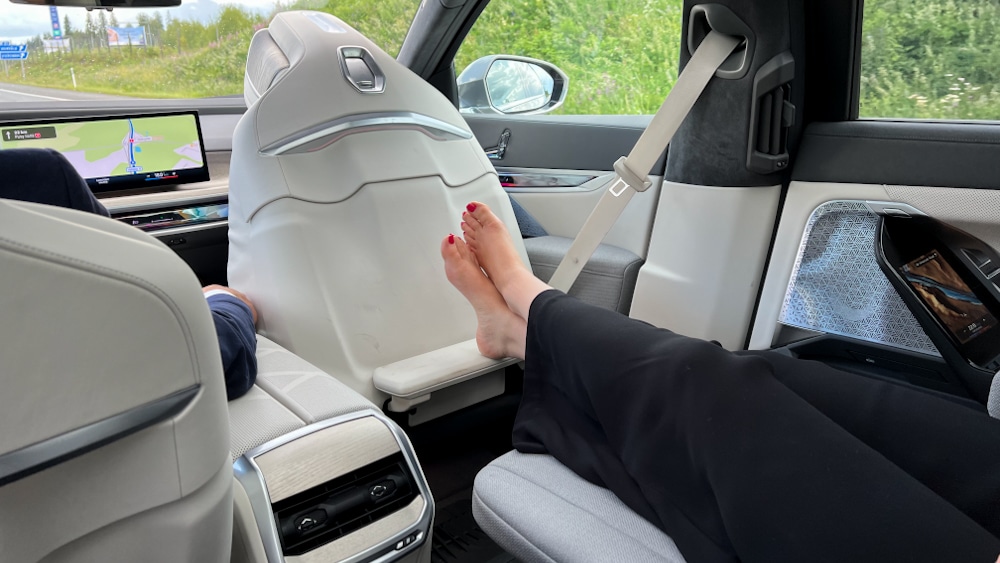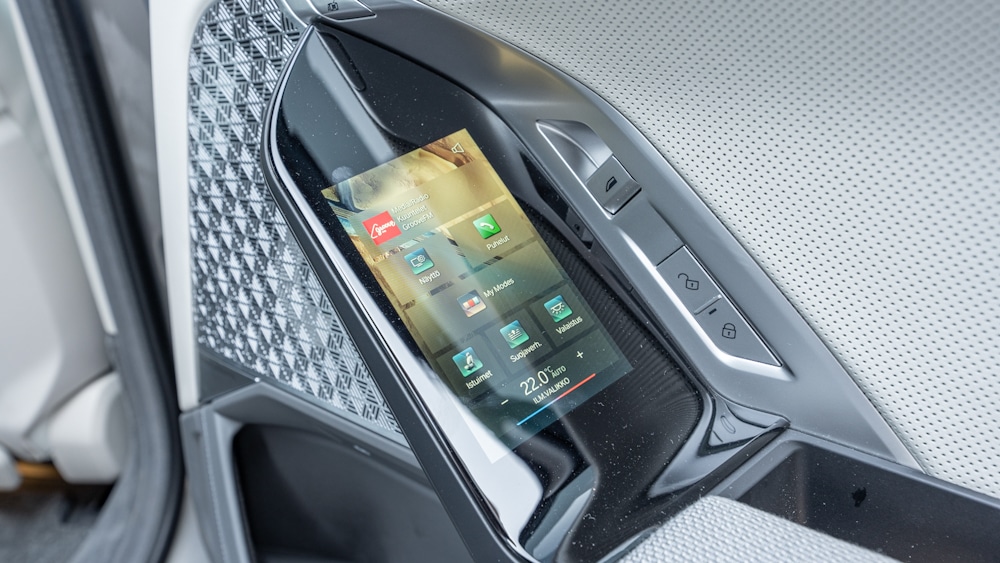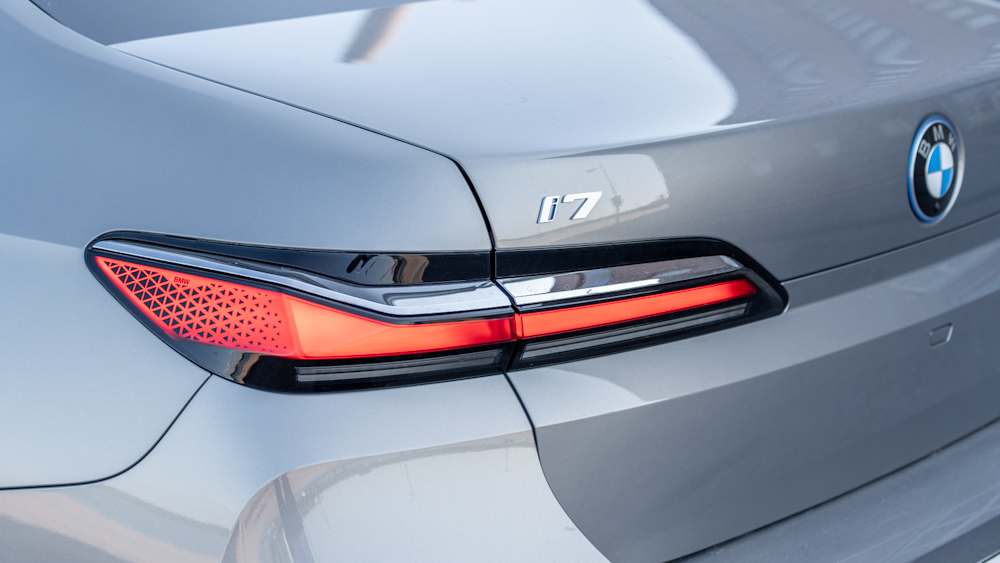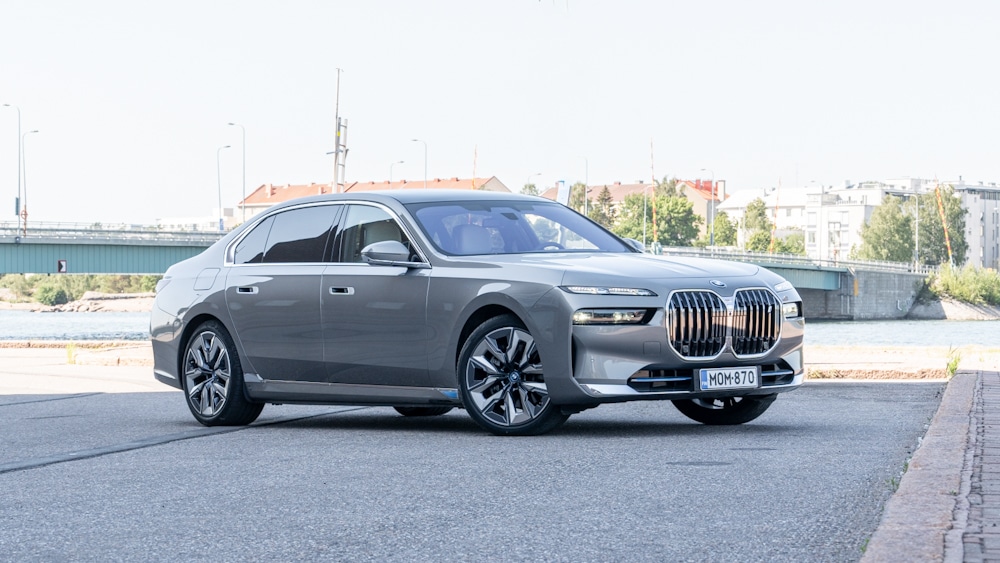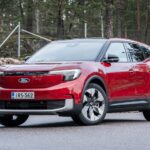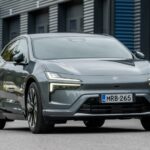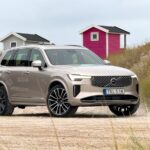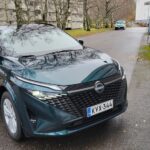Since the 1970s, the BMW 7 Series has been the Bavarian brand’s showpiece in the prestige car segment. The new 7 Series is now available for the first time as a fully electric version in addition to the more traditional hybrid power line. The test-driven all-electric version goes by the model name i7 xDrive60.
The BMW 7 Series models that preceded this latest model have been unobtrusive and unobtrusive in their design, like a large 5 Series, to put it bluntly. But the same cannot be said of the latest edition of the 7 Series. This one has no lack of character in terms of looks.
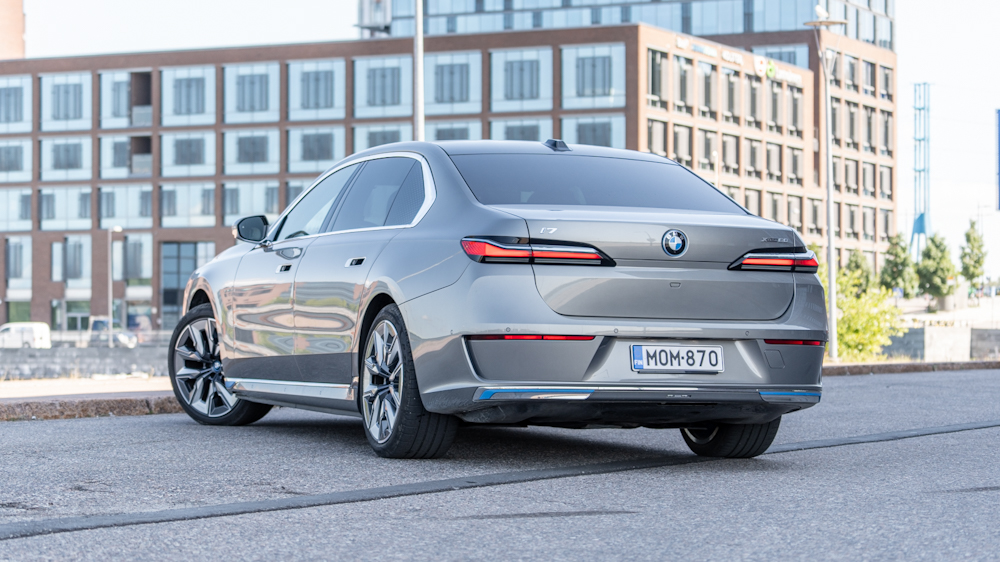
The current design of the front end of BMW models has been the subject of discussion for several years after the large kidneys took over the frontal area. The front end of the i7 clearly does not go unnoticed. During the day, the large, clear lines with chrome accents catch the eye, while at night the distinctive headlamps, and especially the illuminated kidneys all around, are a source of fascination.
While many all-electric manufacturers have gone in the direction of round and teardrop shapes with their models, BMW seems to be boldly fighting the rounded design language on the outside. A closer look at the side styling, for example, reveals that the long, straight side line is derived from the rather angular front bumper design at the bottom. The side profile of the car makes it clear what class the i7 represents.
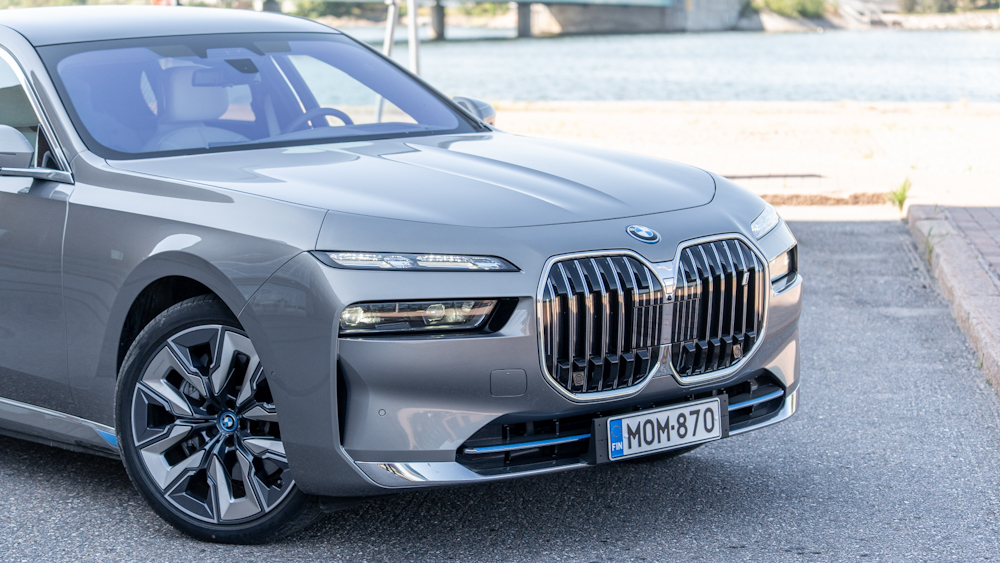
The rear of the i7 is quite understated compared to the rest of the design, although the chrome trim also completes the luxurious look of the rear. Looking at the car’s design over a longer period of time, you can also find something of classic old-fashionedness in the car’s angularity, which is very welcome in this day and age.
In the back as a passenger
In the back seat, the passenger is pampered, if you will. The generous exterior dimensions ensure good space inside. There’s plenty of legroom in the rear in normal position.
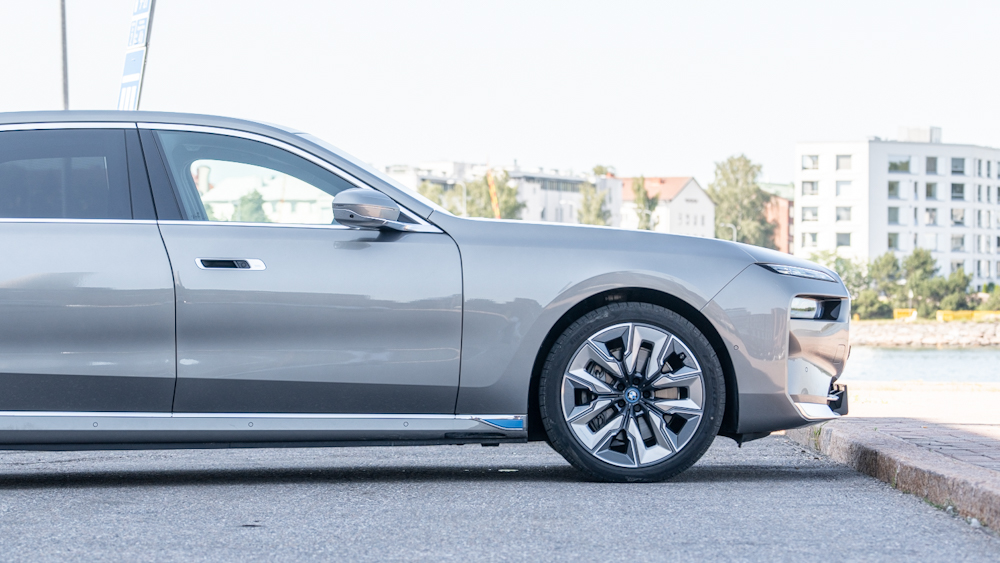
The right-hand rear seat is available in a semi-reclining position, so the front seat folds practically against the windscreen. The rear seat tilts back and a footrest rests on the calves. The seat doesn’t quite fold down to the reclining position, but it’s a testament to the comfort that the rear passenger was very disappointed at the end of a three-hour drive that the journey had ended too soon.
The seats in the test car were mainly made of fabric with a small amount of leather. At first glance, the choice of seat material did not seem to fit in with the rest of the car. In a car of this level, one somehow thinks that leather is the only material for the seats.
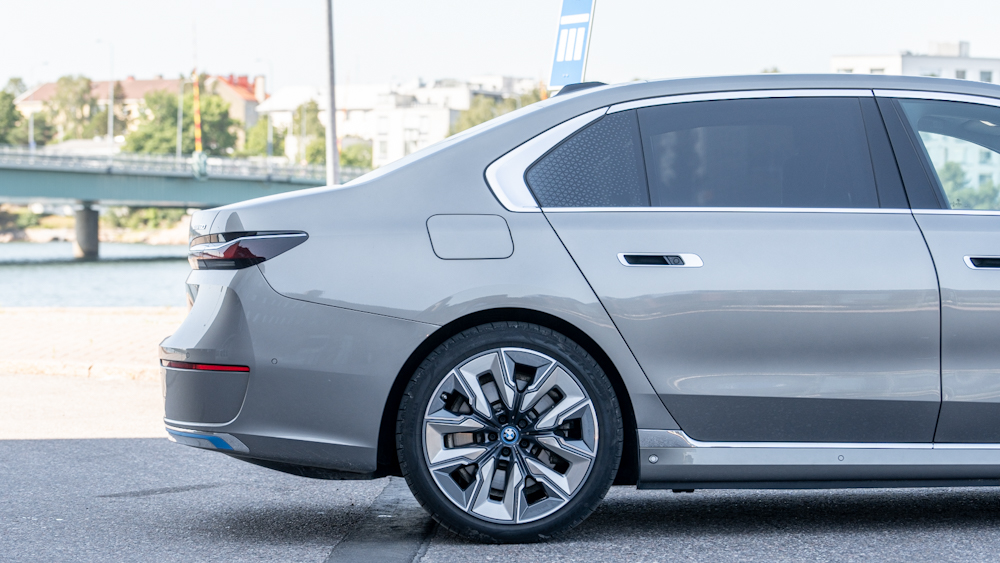
These preconceptions turned out to be completely wrong, as the combination of leather and wool-cashmere fabric on the seats in the test car was the best we have seen in a test car for years. The feel of the combination is superlative, exclusive and very comfortable.
The fabric as a material provides a more even feel for heating and cooling the seat. Massage functions crown the comfort of travel.

In addition to the seat functions, the rear passenger can use the touchscreen in the door to adjust the rear window sunshades and audio equipment, and make calls, for example. And if there’s no one to open the door or you’re too tired to open it yourself, all the doors can be opened and closed at the touch of a button.
On the driver’s seat
Rear passenger comfort is also present in the front, except that you can’t take a nap or do office work in the semi-reclining position. However, the massage functions get the blood pumping comfortably in the front and there’s no need to twist in the seat even after several hours of driving.
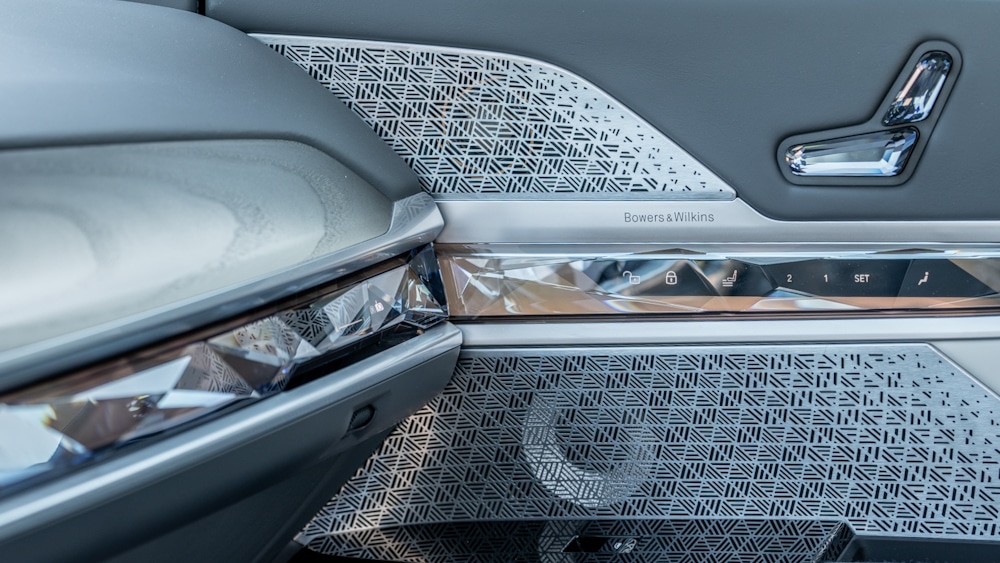
Music sound quality aficionados can now indulge their sense of touch, too, with a Bowers & Wilkins sound system in the seat backrest that lets you adjust the vibration of the bass to your liking. In addition to the system’s numerous speakers, there are also speakers in the headrest to top off the music listening experience.
Visually, the cabin features beautiful material choices and details. There’s crystal on the dashboard and controls, beautifully crafted metal on the speaker panels and perforated leather on the elbow rests. The interior is understatedly stunning – just like the exterior.
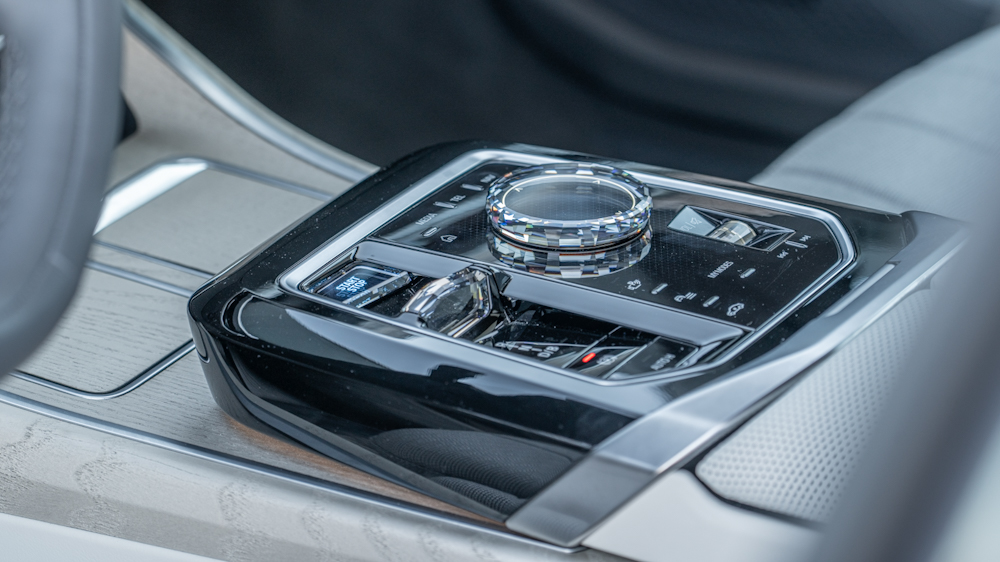
The exterior dimensions and mass of the car are not overlooked behind the wheel. The 400 kilowatts provided by the electric motors propel the i7 with an elegant elegance despite its mass. On-road performance is where the car really shines in terms of drivability.
The i7 leaves the kilometres behind it with great ease. You can’t help but sense the quietness of the cabin at motorway speeds, and your ear goes around the driver’s door looking for airflow whiffs that aren’t much to speak of.
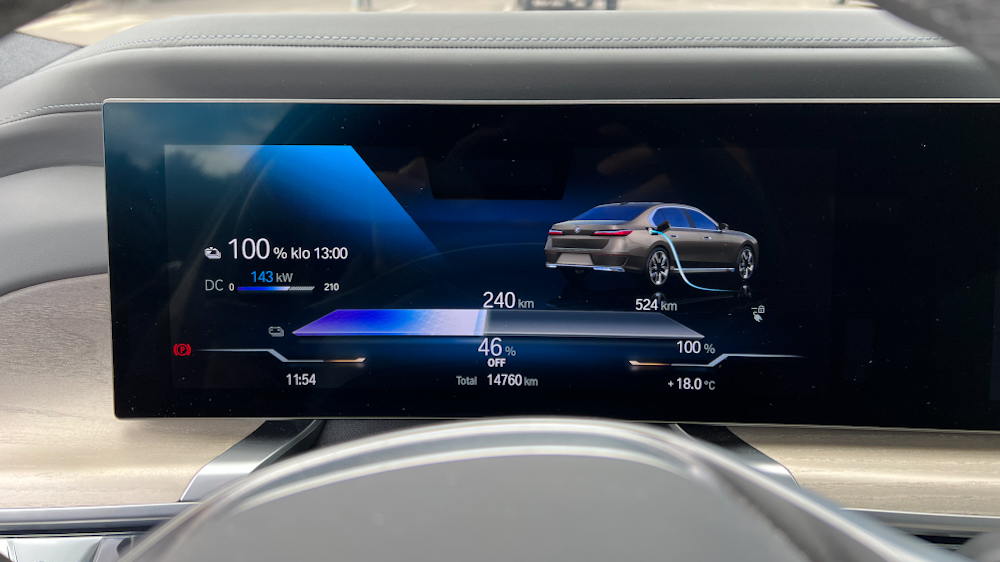
Air suspension comes standard on all i7 models. The car’s curb weight of over 2,700 kg, combined with the chassis, ensures a very comfortable and smooth ride.
Another standard feature on i7 models is four-wheel steering, which is very helpful for a car of this size, especially in city driving. The rear wheels turn up to 3.5 degrees in slower driving, reducing the turning radius. At higher speeds, the rear wheels turn in the same direction as the front wheels, stabilising the drive when changing lanes.

Especially at higher speeds, the four-wheel steering is not noticeable, but at lower speeds, the quick steering movements even feel like a slightly unpleasant buffeting.
i7 as an electric car
The i7 xDrive60 is the mid-range model in the all-electric 7 Series in terms of power and price. Starting at prices, the i7 eDrive50 is rear-wheel drive and priced at just over €118 000. At the more powerful end, there’s the four-wheel drive i7 M70 xDrive with an acceleration time of less than four seconds and a price tag of €176 000.
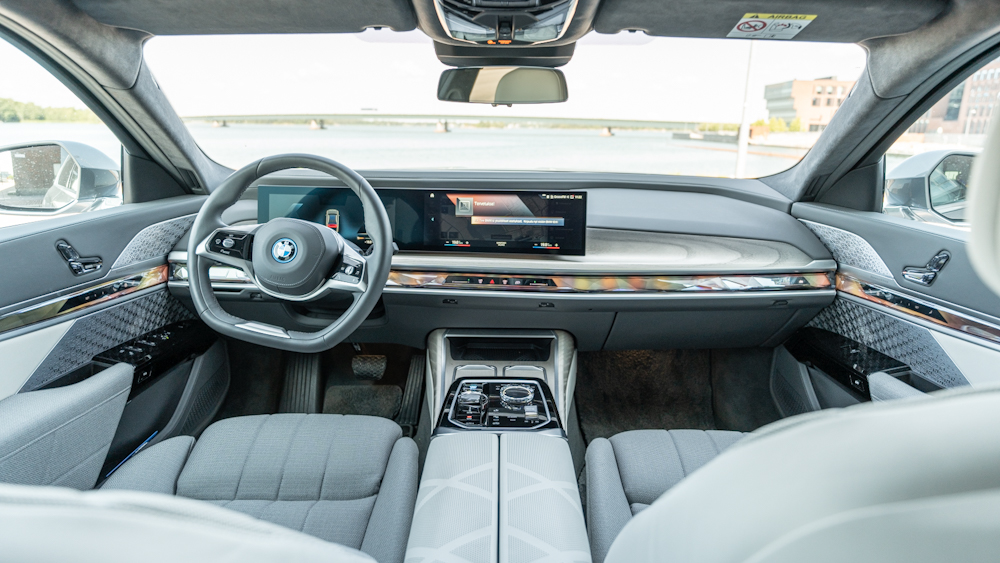
All i7 models share the same battery capacity, of which the available capacity is around 102 kWh. During the test drive, outdoor temperatures averaged around 15 degrees Celsius and the car’s average consumption, mainly including touring, was 20.8 kWh/100km. The actual operating range on a full battery is around 500 km, which is commendable considering the size of the car and all the features that use electricity.
For those who travel further, there is no need to worry about the car’s charging curve. During the test drive, the car was put through its paces several times on the quick charger.
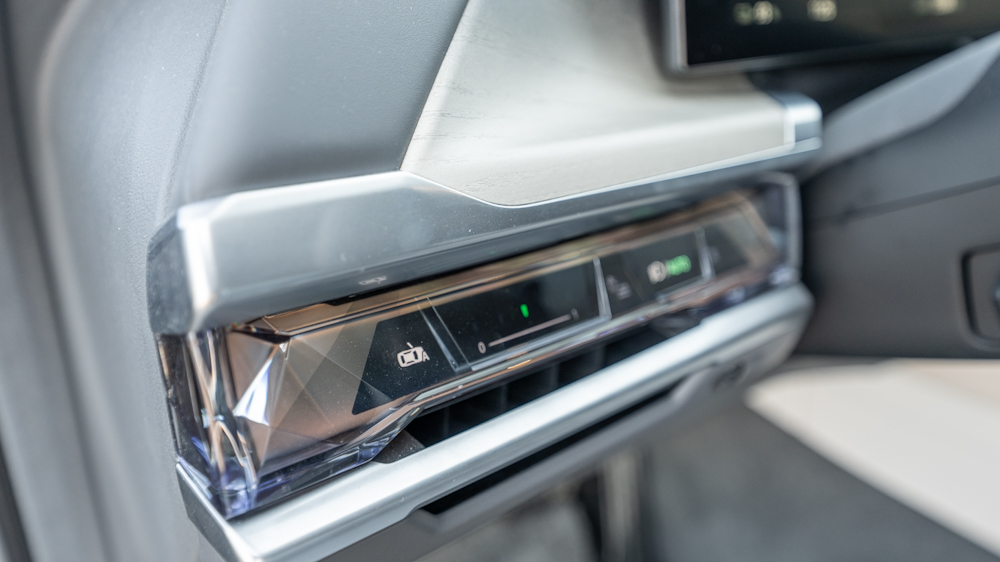
On a few occasions, the car reached the charger at around 50% charge level and the charging power was a respectable 140 kW, despite the half-full battery. When the car reached the charger with a depleted battery, it received power at a maximum of 195 kW, still at 30% charge level and at over 100 kilowatts the charging power remained at 70%.

The manufacturer claims a 10-80% fast charge time of 34 minutes. In the test run, 37 minutes was achieved at 20-90% charge rate. At 70% charge, you can cover about 350 km on the motorway in summer weather.
Charging at home or in shopping centres is accelerated by the standard 22 kW AC charger.
Who is the i7 for
As a whole, the i7 is a striking and stylish presence, and while the car clearly attracts stares and admiration, the i7 does not seem to be a ‘red garment’ for fellow drivers on the road. The luxury ride is best enjoyed from the rear seats, but in true BMW style, the driving characteristics are not compromised.
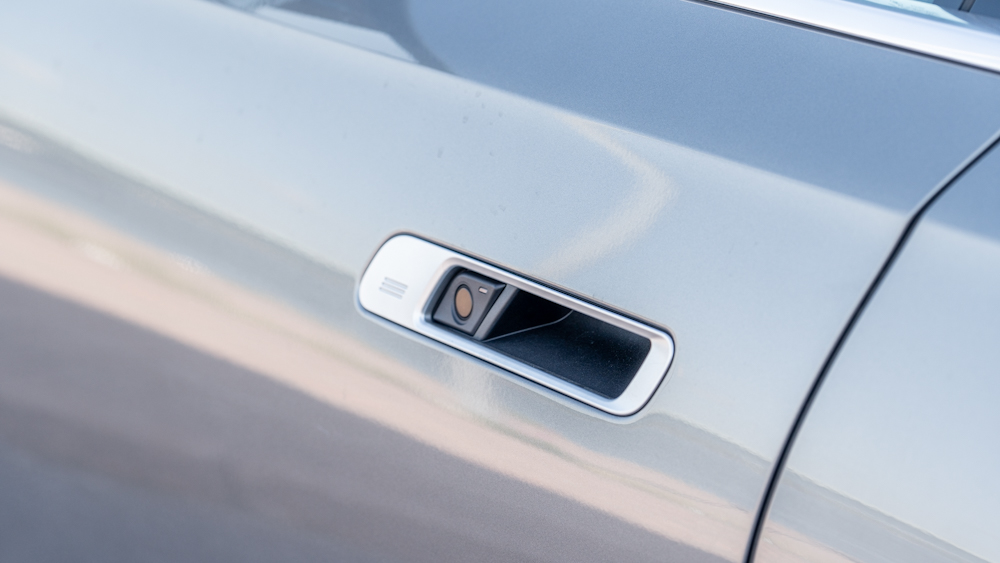
The large exterior dimensions can be a bit of a headache in smaller parking spaces. There’s plenty of assistive technology and cameras around the car, but they don’t completely eliminate the extra concentration needed in tight spaces – the car is 20-30 cm wider than a ‘normal car’.
the i7 is the best BMW has to offer in this size and comfort category. There are few competitors with these features and in this size class. i7 shines from many angles as an excellent electric car in the prestige class.
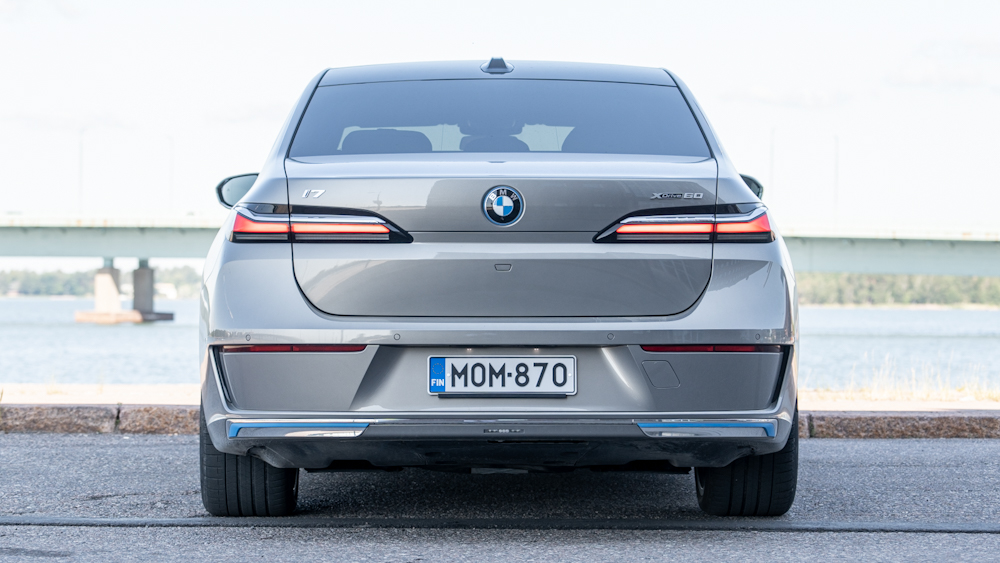
Whether the car is used for maximising personal comfort or for transporting officials on official business, the i7 offers a superb ride both front and rear. i7 is now receiving an exceptional amount of praise, but the car has also earned it.
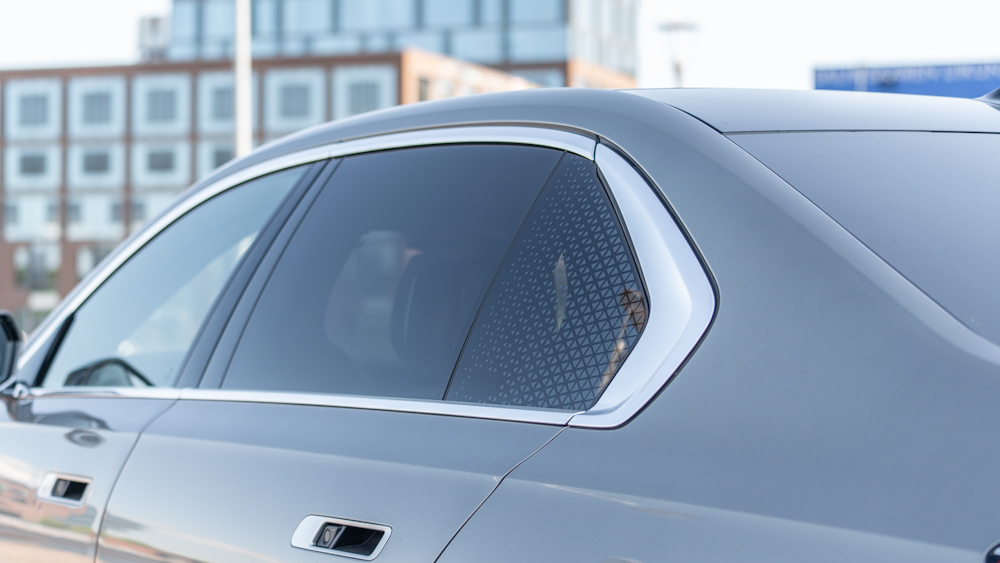
BMW i7 xDrive60
- Total maximum power: 400 kW, 544 hp.
- Total maximum torque: 745 Nm.
- Acceleration: 4.7 seconds (0-100 km/h)
- Driving battery capacity (net): approx. 102 kWh.
- Manufacturer’s declared combined fuel consumption: 18.4-19.6 kWh/100km.
- Manufacturer’s declared range (combined): 591-625 km (WLTP)
- Consumption during test drive: 20-25 kWh/100km.
- Test-driven range on a single charge: 490 km.
- Maximum charging power (DC): 195 kW.
- Maximum charging power (AC): 22 kW.
- Deadweight: 2 715 kg.
- Cargo space: 500 l.
- Traction: four-wheel drive
- Towing capacity: 750 kg (without brakes).
- Traction: 2000 kg (with brakes).
- Starting price: 147 100 euro
- Starting price (i7 eDrive50): €118 290
